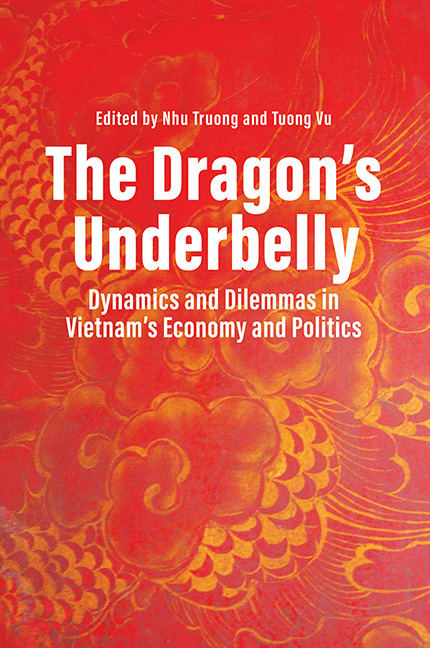Introduction: The Peg of Vietnam’s Economic and Political Development
Published online by Cambridge University Press: 09 January 2024
Summary
During an eight-day spectacle of its 13th National Congress in 2021, the Vietnamese Communist Party opened the curtain on a political theatre that reaffirmed the party’s ruling leadership. This 13th National Congress also marked thirty-five years since the Vietnamese Communist Party (VCP) ushered in Renovation in order to divert the economy towards a path of market reforms. Having survived the collapse of the Soviet Bloc, today, the high economic growth generated under these reforms has provided the party with a claim to performance-based legitimacy. Between 2016 and 2020, Vietnam continued to attract significant foreign investments that sustained an annual growth rate of 6 per cent. During the global coronavirus pandemic, the country’s GDP growth dropped to 2.91 per cent, its lowest growth rate in decades. Yet Vietnam was still recognized as one of the three Asian economies, along with China and Taiwan, to have maintained a positive growth rate despite the severe impact of the pandemic (Lee 2021). This gave the newly elected leadership at the 13th National Congress the confidence to exude continued optimism in the nation’s future (Duc Binh et al. 2021).
Now, at this important juncture, it is a timely opportunity to take stock of Vietnam’s economic and political developments, and to closely dissect the contradictions behind the VCP’s success story. As this volume shows, the previous five years from 2016 to 2020 offered causes for both hopes and concerns. Despite the resilience of the Vietnamese economy, many problems persist, some of which are structural, including the low productivity of the labour force, an inefficient state-owned sector, rising national debt, and the country’s low position on the global value chain of production (P.V. 2020). Back in 2010, VCP leaders formally declared 2020 to be the year when Vietnam was to become a modern, industrialized economy (Ng Tong 2010). Ten years later, the goalposts for the party’s performance have been expediently shifted. The party now aspires to transform the economy and to achieve national industrialization by 2035 (Song An 2021), but that goal remains elusive to date.
In politics, the VCP has tightened its grip over political elites during the previous five years.
- Type
- Chapter
- Information
- The Dragon's UnderbellyDynamics and Dilemmas in Vietnam's Economy and Politics, pp. 1 - 22Publisher: ISEAS–Yusof Ishak InstitutePrint publication year: 2022



